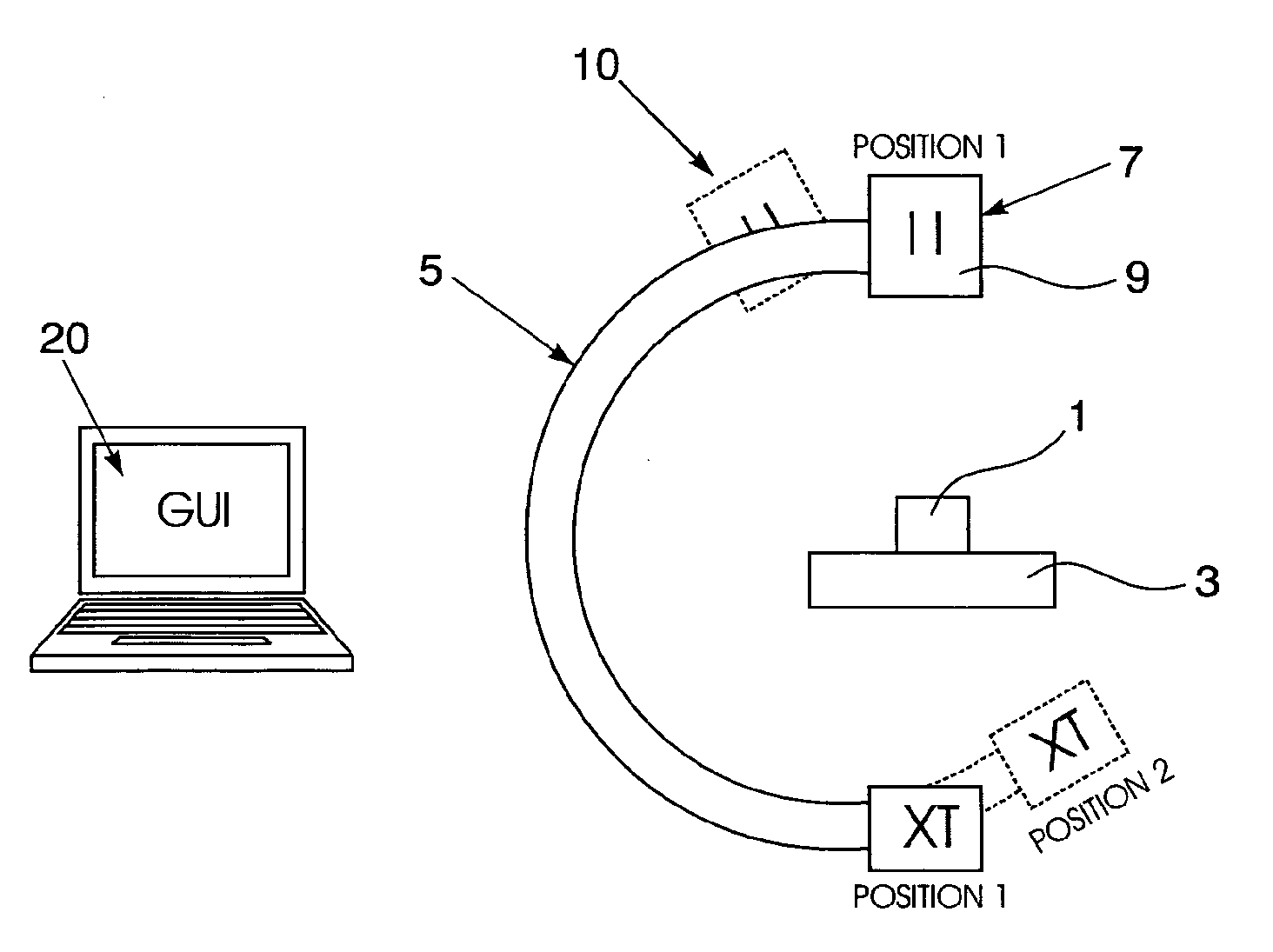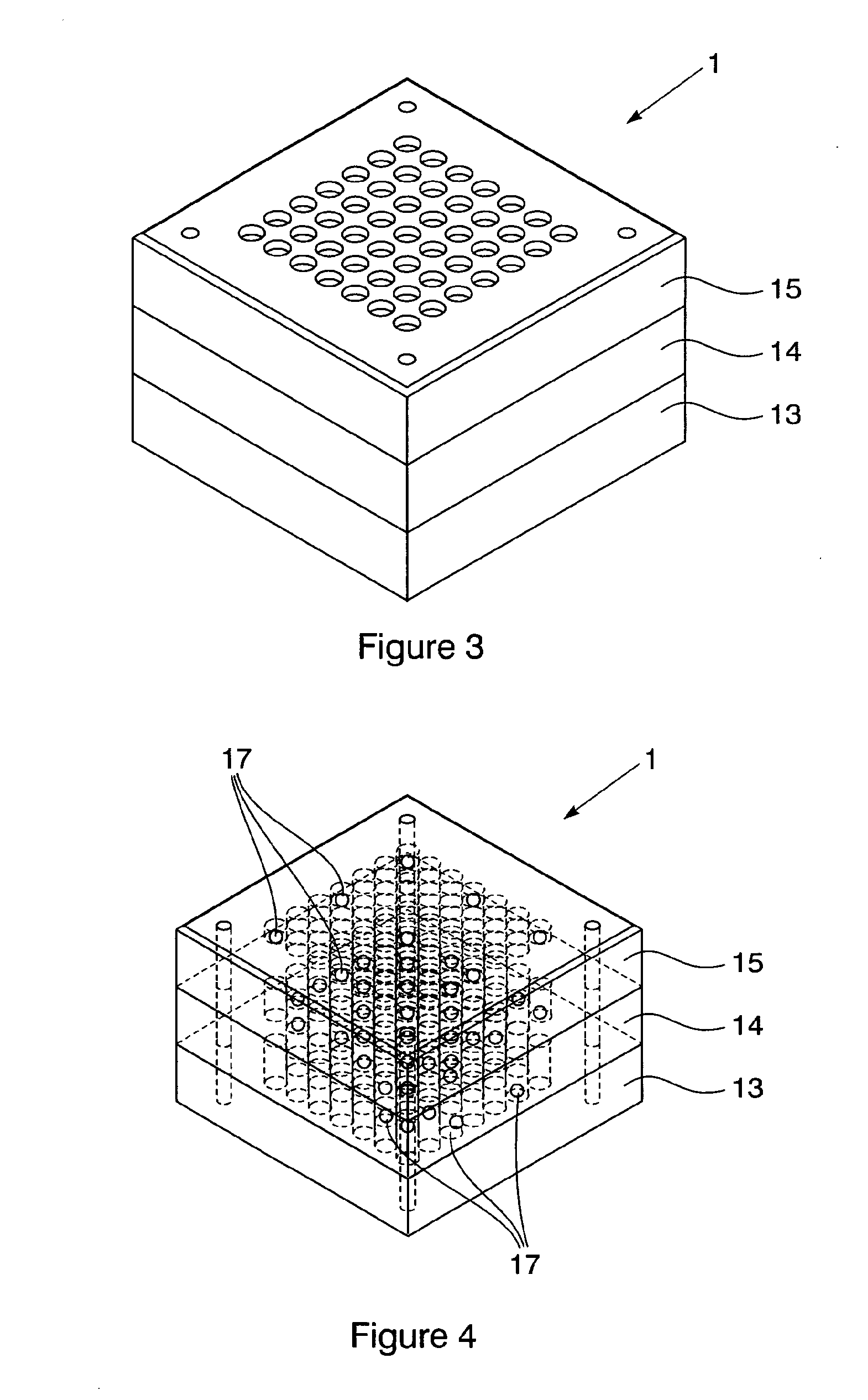Method for positioning an instrument
- Summary
- Abstract
- Description
- Claims
- Application Information
AI Technical Summary
Benefits of technology
Problems solved by technology
Method used
Image
Examples
Embodiment Construction
[0039]A method of positioning an instrument, in this embodiment a needle, is illustrated with reference to FIGS. 1 and 2. In a first step, illustrated in FIG. 1, a calibration object (1) is placed on an operating table (3) and a C-arm fluoroscope (5) used to take two images thereof. In this embodiment, the first image is taken from a first orientation (7) with the x-ray generator (9) directly overhead. The second image is taken from a second orientation (10) with the x-ray generator (shown in broken lines) rotated 20° from the first orientation.
[0040]As shown in FIGS. 3 and 4, the calibration object (1) is box shaped and has three super adjacent layers (13, 14, 15), each of which has a plurality of radio opaque markers (17) arranged at a known location in a planar array. The markers (17) are furthermore arranged so that each is visible in the fluoroscopic images taken from both the first orientation and second orientation. The location of each marker (17) is pre-determined and in th...
PUM
 Login to View More
Login to View More Abstract
Description
Claims
Application Information
 Login to View More
Login to View More - R&D
- Intellectual Property
- Life Sciences
- Materials
- Tech Scout
- Unparalleled Data Quality
- Higher Quality Content
- 60% Fewer Hallucinations
Browse by: Latest US Patents, China's latest patents, Technical Efficacy Thesaurus, Application Domain, Technology Topic, Popular Technical Reports.
© 2025 PatSnap. All rights reserved.Legal|Privacy policy|Modern Slavery Act Transparency Statement|Sitemap|About US| Contact US: help@patsnap.com



